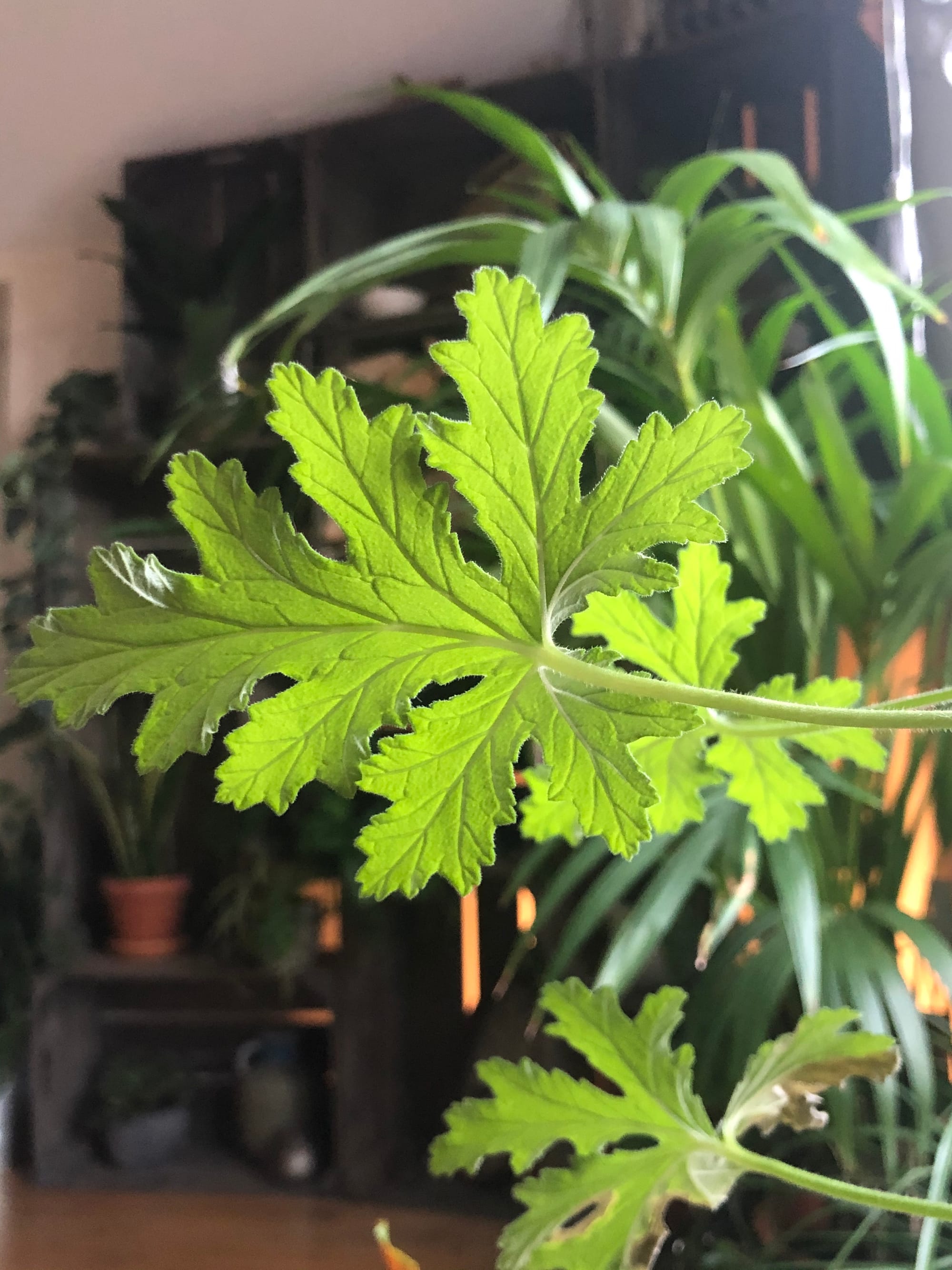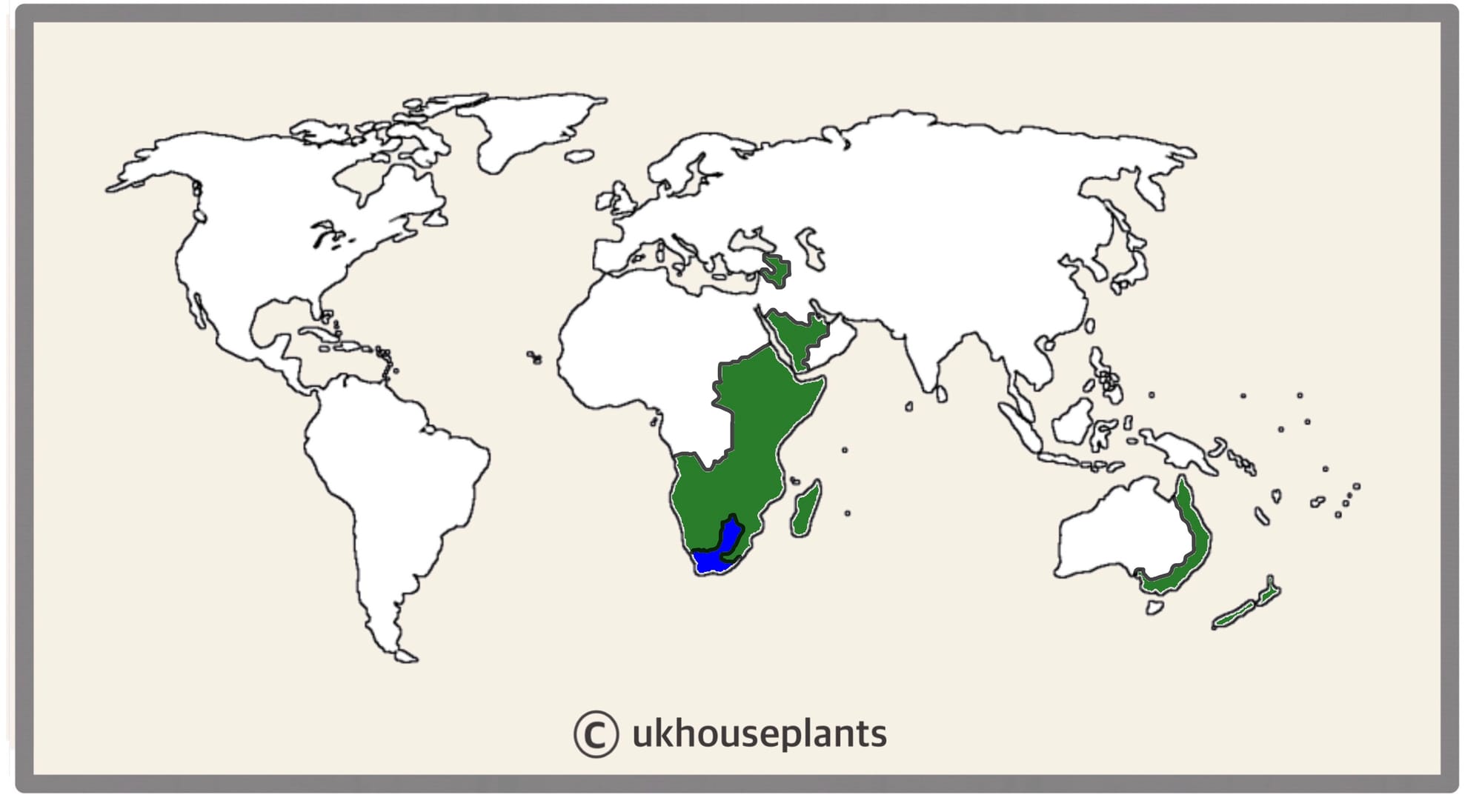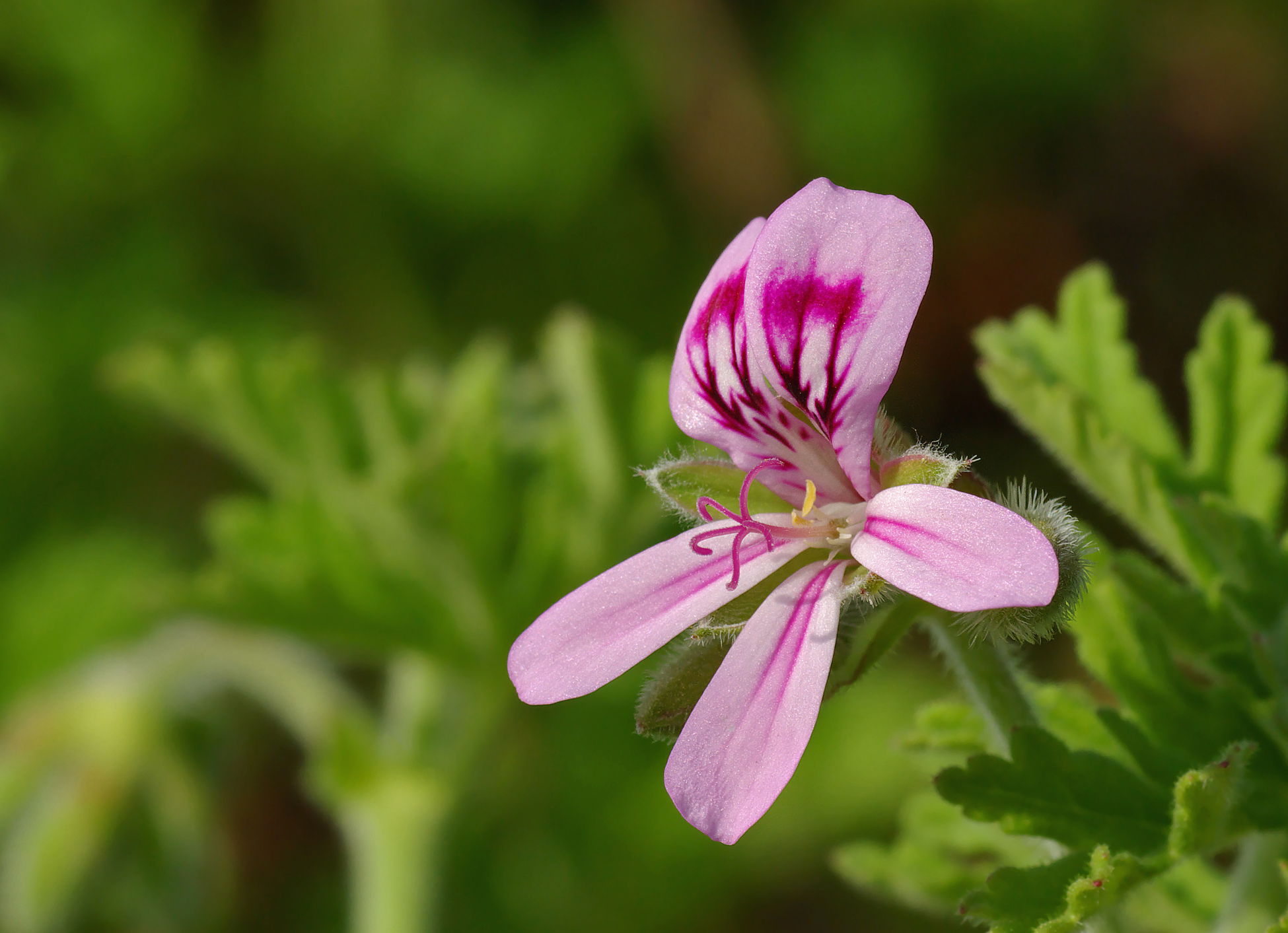
Pelargonium graveolens
Contents
- Top Tips
- Location, Water, Humidity & Fertilisation
- Common Issues
- Origins, Temperature, Propagation, Repotting & Toxicity.
Need the answer to a specific plant query? Book a 1-to-1 video call with Joe Bagley, the website's friendly author, to overcome and address your niggling problem! Available on iMessage, WhatsApp, Facebook Messenger & more.
Top Tips & Info
- Care Difficulty - Moderate
- Lemon Scented Geraniums soak-up moisture rather quickly compared to some houseplants, so it's important to maintain near-constant moist soil. Allow the top third to dry out in between waters, reducing this slightly in the autumn and winter.
- Provide a bright location with little to no direct sunlight. We'd recommend a north, east or west-facing windowsill, or a semi-shaded conservatory for ultimate light-capturing efficiency. Darker settings are still acceptable, as long as you reduce the number of hydrations slightly to avoid over-watering.
- Fertilise using a 'Houseplant' labelled feed every four waters in the spring and summer, reducing this to every six in the colder months.
- Repot every two years during the spring, using a 'Houseplant' labelled potting mix and the next sized pot with drainage holes. Repotting annually is also acceptable if yours is situated in a bright location, as the fresh soil will retain the moisture to prevent dehydration.
- Keep an eye out for Mealybugs and Aphids that'll attack the cubbyholes and leaves of your plant.
Location & Light - 🔸🔸
Lemon Scented Geraniums prefer bright, indirect light with the absence of deep shade. As you'll have to keep the soil relatively moist, the risk of soil mould and over-watering is dramatically increased when maintaining too little light. A setting that boasts a splash of morning or evening sunlight for up to two hours is perfect for good, quality growth. Remember, those kept in brighter or warmer locations are more susceptible to dehydration and sun-scorch, so be sure to mentally note when your specimen needs water.
Water - 🔸🔸
Maintain evenly moist soil, allowing the compost's top third to dry out in between waters. It's important not to promote what's known as 'irrigation abuse', whereby the specimen is subjected to periods of droughts, followed by floods of hydrations. Not only will this promote unreliable foliar growth, but it could also result in yellowed older leaves. Under-watering symptoms include weak growth, sunken or yellowed leaves, little to no growth and dry, crispy legions forming on the leaves. These issues are typically caused by too much light/heat or forgetfulness. Remember, the brighter the location, the more watering you'll need to do. Over-watering symptoms include a weakened or rotten stem, no new growth, yellowing lower leaves and eventual plant death. Click here to learn more about root rot and how to address it!
Humidity - 🔸🔸🔸
Average room humidity is excellent for this plant. At monthly intervals, perform a gentle hose-down to hydrate its leaves and reduce the number of dust particles resting on its foliage.
Fertilisation - 🔸🔸
Fertilise every four waters during the growing period before reducing this to every six in the autumn & winter. Although an 'All-Purpose' fertiliser will still do the job, we'd recommend using a specific 'Houseplant' labelled fertiliser as it'll support the vital thirteen nutrients that this species will need to grow.
Common Issues with Lemon Scented Geraniums
Yellow or dull older leaves could be the product of irregular watering, along with a nutrient deficiency, too. If you're having issues of persistent droughts, followed by periods of over-watering, the specimen may begin to show signs of poor health with its foliage taking most of the brunt. You must also regularly feed the plant, as low nutrient levels within the soil could also result in weakened photosynthetic rates, thus further hurting the plant's wellbeing. Although the leaves won't revert to its former green glory, the juvenile growth will show better signs of health within the oncoming weeks.
Alternately, yellowing lower leaves could be a sign of over-watering, but equally is a byproduct of maturity. If the older leaves rapidly become yellow in quick succession, over-watering could be to blame. People don't realise that a plant's root system needs access to oxygen too; when soil is watered, the air will travel upwards and out of the potting mix. A lack of accessible oxygen for the roots will cause them to subsequently breakdown over the oncoming days. Click on this link to learn more about root rot and how to address it.
If your specimen is located in a dark environment with mould developing on the compost's top layer, use a chopstick to stab the soil in various areas gently. You should aim to enter the compost between the base of the plant and the pot's edge, as failure to do so may lead to damaging its lower portion. Leave the holes open for a few days before re-surfacing the soil to avoid it becoming overly dry. Not only will the gentle shift in the soil's structure mimic the work of small invertebrates in the wild (worms, etc.), but it'll also add oxygen back into the soil, thus reducing the risk of root rot. Repeat this monthly, or whenever you feel the potting-mix isn't drying out quickly enough.
Curled leaves and brown leaf-edges are the result of too little water and over-exposure to the sun. Lemon Scented Geraniums are best located in bright, indirect settings, and those that haven't acclimatised to the harsh rays will show signs of sun-scorch and environmental shock. A splash of winter sunlight is acceptable as long as the soil moisture is regularly observed, with complete avoidance once summer comes along.
Never situate it within four metres of an operating heat source, for instance, a heater or fireplace. Due to the heightened temperature, the plant will soak up far more moisture than those situated in cooler locations, increasing the chance of droughts and browning leaf-edges.
Finally, failed propagated stem cuttings - There are several reasons why the cuttings haven't rooted well, including: the time of year (spring or summer is best), its size (Geranium & Pelargonium cuttings should be at least 10cm (4 inches) in length), poor growing conditions (replace water weekly for water-propagated cuttings, and avoid over-watering for soil-grown plants), and its growing environment (a bright sunless windowsill and warmth is important).
Origins
Pelargonium is a genus of around three hundreds species, mostly originating from East to South Africa - except for some regions of Australia. The difference between the Geranium and Pelargonium is within the structure of its flowers and frost tolerance. Geranium has actinomorphic flowers which 'radiate' outwards in an equal manner, whereas the latter is generally zygomorphic. Pelargonium was first described by Charles Louis L'Héritier de Brutelle in 1789, using the Greek term for the 'Stork' bird, Pelargos, which originates from Africa. For those wondering, Geranium also derives from ancient Greek, translating to 'crane' that refers to the beak-like seed capsules shortly after successful pollination. The most popular indoor species, the P. graveolens, refers to the strong scent secreted by fauna tissue.
 The Distribution of Pelargonium in Green & P. graveolens in Blue.
The Distribution of Pelargonium in Green & P. graveolens in Blue.
Temperature
5° - 27℃ (40° - 80℉)
H2 (Hardiness Zone 10) - Tolerant of temperatures above freezing. This plant will die if left in temperatures below frosts; move to a conservatory or greenhouse until this risk has elapsed.
Spread
The overall size can be up to 1m (3ft) in height and 0.7m (2.5ft) in width. The ultimate size will take between 3 - 6 years to achieve when repotted biannually, with several new leaves unfurling per annum.
Pruning & Maintenance
Remove yellow or dying leaves, and plant debris to encourage better-growing conditions. While pruning, always use clean scissors or shears to reduce the chance of bacterial and fungal diseases. Never cut through yellowed tissue as this may cause further damage in the likes of diseases or bacterial infections. Remember to make clean incisions as too-damaged wounds may shock the plant, causing weakened growth and a decline in health.
Propagation
Via Seed or Stem & Eye Cuttings.
Stem & Eye Cuttings (Easy to Moderate) - This method of propagation is troublesome good water hygiene and a bright, suitable location. Choose the healthiest, most established stems that are slightly hardened, yet still juvenile enough to bend. Each cutting should be around 20cm (7 inches) in length for the best rates of root growth. Cut directly below a node using a clean pair of scissors to reduce bacteria count. Remove the older half of the leaves, and place the specimen into a glass of lukewarm tap water to allow the root caps to develop. Try not to submerge the leaves in the water as it may result in rot and therefore, bacteria development. After several weeks of solid root growth, which can take up to two months, place the specimen's lower third into a 10cm pot (4 inches) with 'Houseplant' labelled compost. Don't over-compact the soil as it'll strip oxygen from the soil when the plant is next watered, thus resulting in root rot. Maintain bright, indirect light and evenly moist soil with the avoidance of direct sun or cold draughts. After a further two months, follow the same care routines mentioned in the article's top half. Stem cuttings can take up to five months, so patience and the correct environment are paramount for success!
Flowers
Lemon Scented Geraniums will rarely flower indoors, due to the unfavored growing conditions found within a domestic setting.
 The inflorescence of a Pelargonium graveolens.
The inflorescence of a Pelargonium graveolens.
Repotting
Repot every two years in the spring, using a 'Houseplant' labelled potting mix and the next sized pot with adequate drainage. Hydrate the plant 24hrs before tinkering with the roots to prevent the risk of transplant shock. For those situated in a darker location, introduce extra amounts of perlite and grit into the lower portion of the new soil to downplay over-watering risks. Click here for a detailed step-by-step guide on transplantation, or via this link to learn about repotting with root rot.
Book a 1-to-1 video call with Joe Bagley if you'd like a personal guide to repotting your houseplant. This will include recommending the right branded-compost and pot size, followed by a live video call whilst you transplant the specimen for step-by-step guidance and answer any further questions!
Pests & Diseases
Keep an eye out for mealybugs, aphids & greenfly, spider mites, scale, thrips & whitefly. Common diseases associated with this species are root rot, red leaf-spot, heart rot, botrytis & southern blight - click here to learn more about these issues.
Toxicity
This plant is classified as poisonous, so if small sections are eaten, vomiting, nausea, and a loss of appetite may occur. Consumption of large quantities must be dealt with quickly; acquire medical assistance for further information.
Retail Locations
Rarely sold in garden centres, so have a look around on the internet for potential purchases.
Book a 1-to-1 Call with Joe Bagley
If you need further advice with your houseplants, book an advice call with ukhouseplants' friendly and expert writer today! This can be done via a video or audio call on most apps, including Facebook, FaceTime & Skype. A ten-minute call costs £5.99 (US$7), or £15.99 for thirty minutes. You can ask multiple questions, including queries on plants, pests, terrariums, repotting advice and anything in between. Please consider supporting this service to keep ukhouseplants thriving!